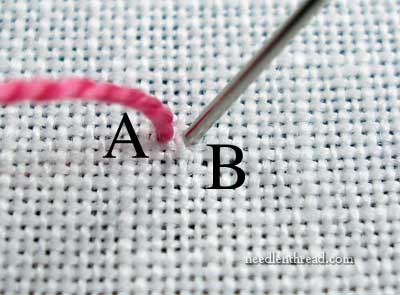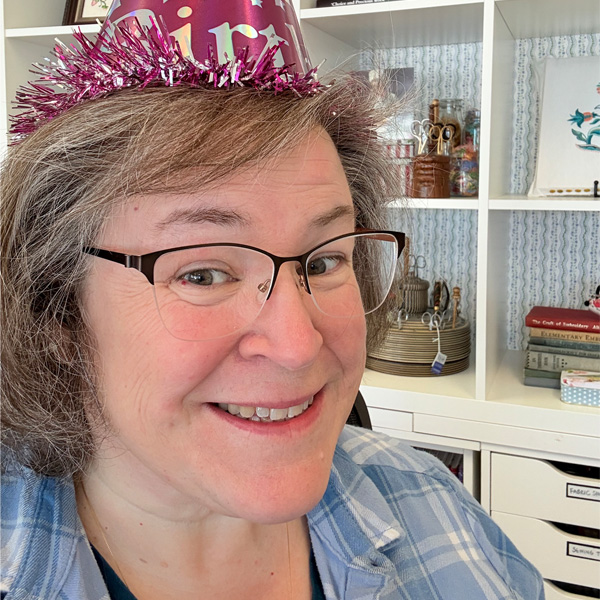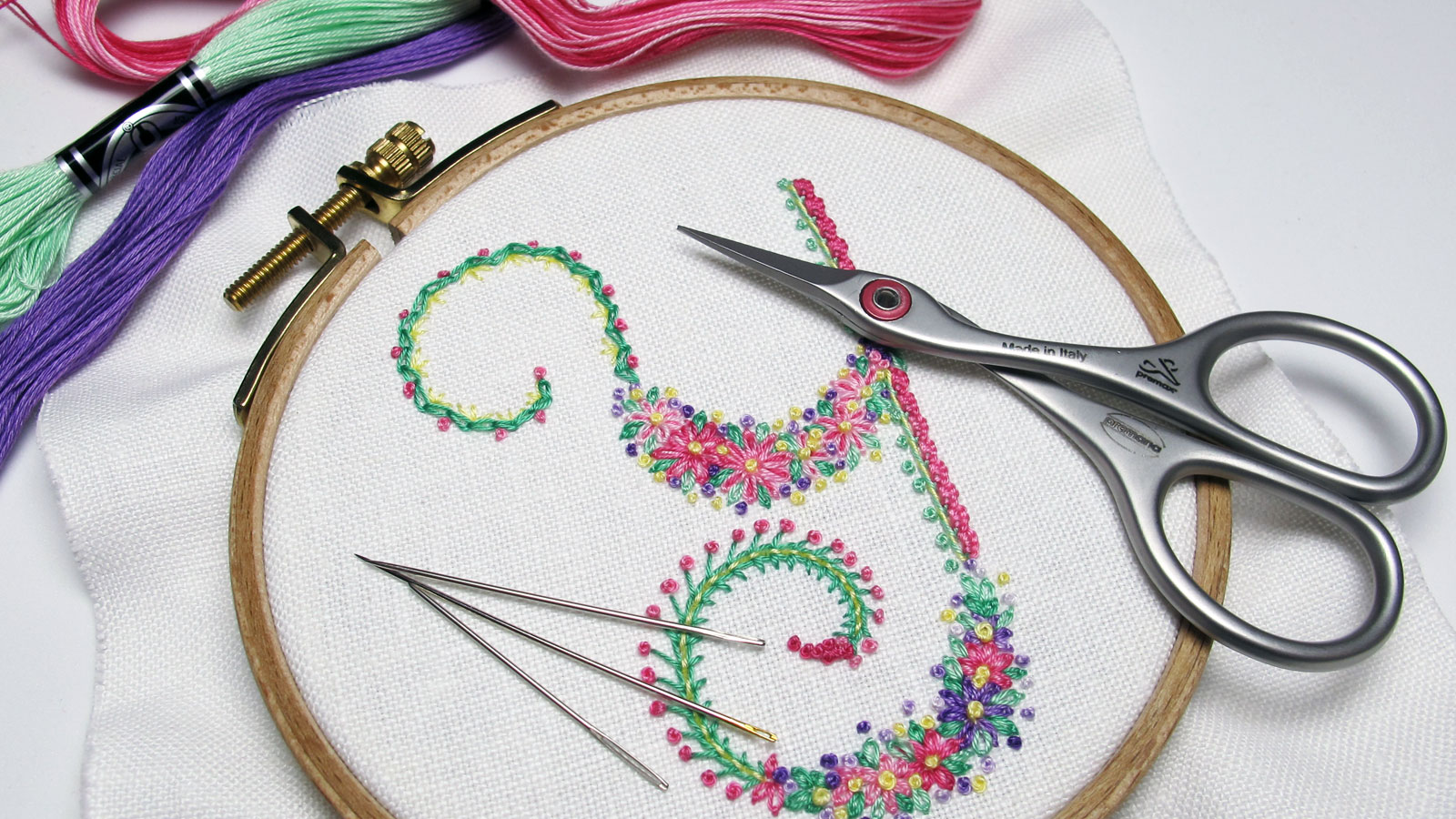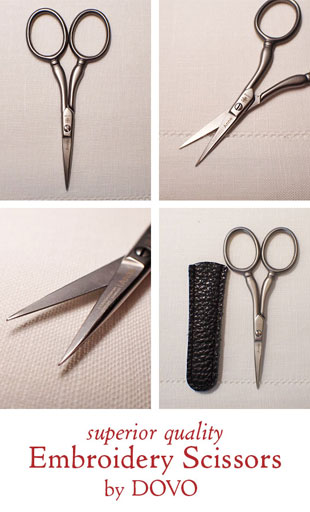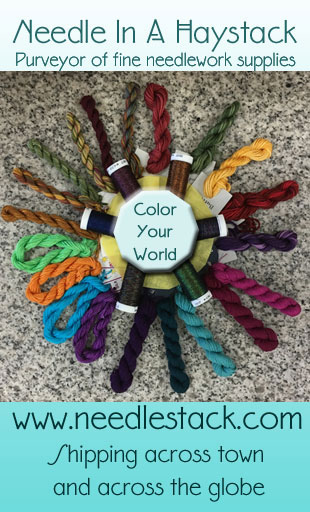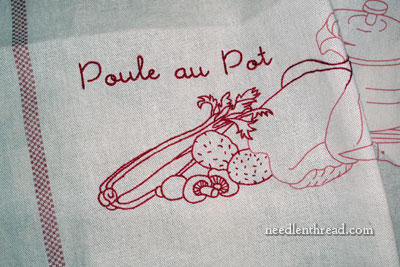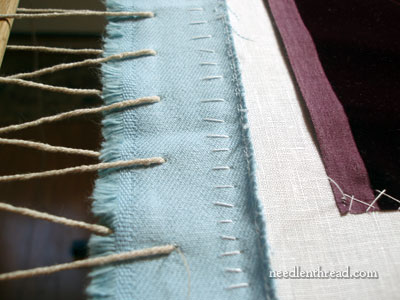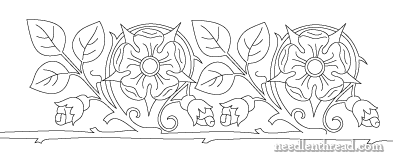The bullion knot is a terrific little slug-like stitch. Oh, that sounds ugly. It’s a terrifically beautiful stitch, and you can make terrifically beautiful things with it!
It’s a terrifically versatile stitch, too.
And at first, it can be terrifically intimidating.
To help you with the latter point, I have a how-to video for the bullion knot. In the video, I’ve worked the bullions with the fabric in a hoop that’s stretched somewhat tight, but not tight enough to prevent me from making the bullion knot easily.
Today, we’re going to look at the bullion knot, worked on fabric that’s framed up very taut in an embroidery frame. When the fabric is very taut, and when you’re working in a frame with two hands available for the stitching (you don’t have to hold the hoop with one hand), there’s a slightly different method you can use for making a bullion knot. You might find it much easier to approach bullions this way.
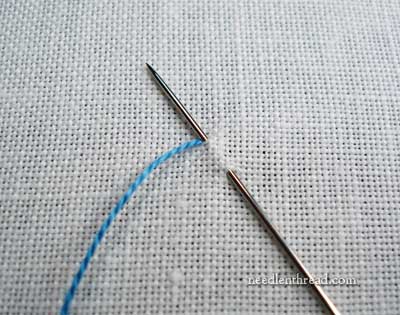 Continue reading “Working a Bullion Knot, Framed Up”
Continue reading “Working a Bullion Knot, Framed Up”
